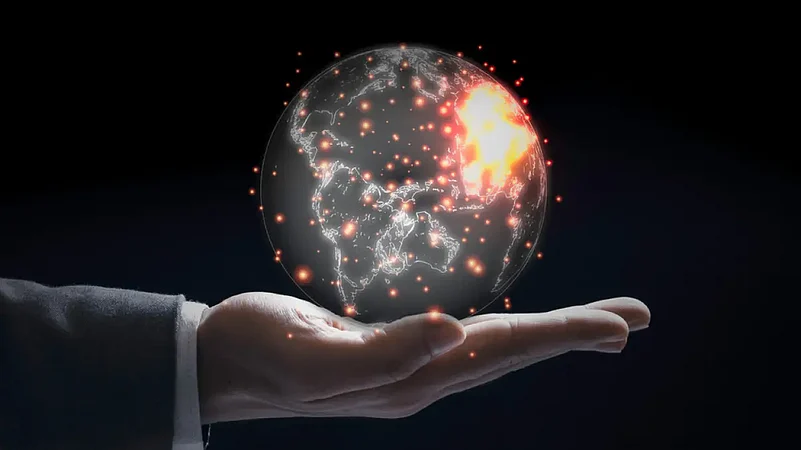It’s been a headybut rapid decline. Barely 17 years ago, Nobel Prize winning economist Joseph Stiglitz wrote, in his Globalisation and Its Discontents, a cautionary tale of rapid globalization. Today, the leitmotif of conversations around the world is the frenetic pace of Deglobalisation. They say the candle burns brightest before it goes out. It seems that globalization, and a period of immense global prosperity and progress driven by it, has just seen its peak. Peter Zeihan says in his provocative new book, End of the World is Just the Beginning, the world’s best days are behind us now, and future’s going to be darker.
Advertisement
While the Covid-19 pandemic and the more recent war in Ukraine showed risks of deglobalization up starkly, tell-tale signs were evident for a longer time. In the UK, a national programme called Reshore UK was announced in 2014, aimed at incentivizing critical industries (like aerospace, energy etc) to move back manufacturing to UK. A trial run, perhaps, for BREXIT in 2016? India’s lack of ardour towards the marquee RCEP trade deal, pointedly because of a large trade deficit with China, showed apprehensions about weaponization of trade. China’s Belt and Road Initiative (BRI) – a curiously closed-architecture overseas development programme – represents efforts to create alternates to multilateral platforms like World Bank and ADB. President Biden’s Supply Chain Resilience initiative as a hedge for Chinese dominance in manufacturing brings deglobalization to the doorstep of the world’s exemplar globalizer!
Advertisement
To be sure, global value chains are too intermeshed and building up industrial capacities too complex for the clock to be turned 180 degrees. However, a reversal of globalization is surely afoot. The key question for us – how does this affect India?
First, the good news. India’s size affords a great degree of resilience. As does India’s policy choices post-independence. A large part of East Asia’s success post WW2 owes itself to a grand bargain – where the US traded non-reciprocal market access in lieu of political alliances (or tilts in some cases). This allowed most of Asia, including China since the late 1970s, to profit from a great expansion of exports to the West while keeping its industries protected, driving growth and prosperity. India never signed up in the same template. Politics of the subcontinent rather drove India to have a sort of a tilt towards USSR. Consequently, this, along with India’s size, has meant that the country has preserved the capability and infrastructure in vast swathes of industry – well short of global best, but a capability exists on the ground. In a near-shored (or friend-shored) world, where supplies can be disrupted on political exigencies, India has the ability to make up for absent supplies, albeit at a higher cost and/or some time.
The bad news though isn’t far either. While India didn’t sign up for the American Grand Bargain post-WW2, reforms 1991 made the country at least an adjunct signatory to the same. Part design and part default (driven by the unravelling of USSR), it paid off handsomely. India’s trade and exports took off, especially services exports, as did foreign investments into India. Growth jumped a couple of percentage points from the levels seen since independence. Access to global capital also solved, for a large part, India’s biggest policy-constraint since 1947, lack of foreign exchange. Large FII and FDI flows meant that India’s external account remained stable, allowing policy-makers to concentrate more on outcomes for industry and consumers. A reversal of globalization puts this acceleration of growth at risk, even as India is still at low (by Asian standards) levels of income.
Advertisement
The world might be divided into zones that grows its own food, welds its own steel and manufactures its own cars. But all of them would still require capital. In fact, more of it as new farms, steel foundries and automobile factories need to be built. This capital, as is its wont, will chase the biggest and most profitable enterprises to fund. India, with its large (and still young) population, will be in a unique position to offer the biggest scale for a range of industries. We see a great natural experiment in this in the form of India’s position as a start-up hub. The great deal of VC interest in India’s digital companies is primarily because of the scale that India offers to these companies. Ergo, while India might lose a chunk of its (post-1991) incremental growth, it will remain relatively far better off than the rest of the world. As a contrast, in 2007, perhaps the very peak of globalization, nearly 100 countries clocked a GDP growth of 7%. There isn’t an encore expected soon, but India will remain a relative star. That should give the country enough ballast to figure a way out to accelerate.
Advertisement
India’s scale and diversity offers us a chance, even as the world hurtles towards an uncertain future.
The author is the Managing Partner and CIO, ASK Wealth Advisors. The views and opinions expressed in this article are personal.















 Just one email a week
Just one email a week